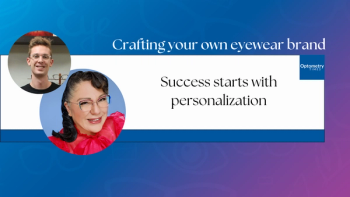
AI accuracy improves IOL prediction models for high myopic patients
Low prediction errors from 2 evaluated formulas shows promise for accurate prediction of IOL formulas in high myopic patients.
A new report shows that intraocular lens power formulas for high myopia can be accurately predicted by using artificial intelligence (AI).1
Lead investigator Miki Omoto, MD, PhD, Department of Ophthalmology, Keio University School of Medicine, Tokyo, explained that with the use of modern surgical techniques, patients’ expectations for better vision postoperatively are increasing. However, the ability to accurately predict the postoperative refraction in myopic eyes remains challenging.
The investigators applied AI to 5 lens power formula predictions and compared the results in highly myopic patients with an axial length [AL] exceeding 26.0 mm, and who were undergoing uncomplicated cataract surgery. The patients were followed for a minimum of 1 month postoperatively.
The formulas evaluated were the Hill-RBF3.0 and Kane, which are newly updated formulas; and the Barrett Universal II (BUII), Haigis, and SRK/T; they were compared for prediction errors, absolute errors, and percentages of eyes with prediction errors within ±0.25, ±0.50, and ±1.00 diopters (D).
The Hill-RBF refractive formula uses pattern recognition and data interpolation to predict postoperative refraction.2,3 The Kane formula is based on theoretical optics and incorporates regression and AI components to further refine its predictions,4 Omoto explained.
Analysis of lens power formulas
A total of 70 eyes were included. The mean patient age at surgery was 64 years old, and the mean axial length was 27.8 mm.
The investigators reported that the prediction errors with the Hill-RBF3.0 and Kane formulas differed significantly from the BUII, Haigis, and SRK/T formulas; the Hill-RBF3.0 and Kane formulas did not differ from each other.
The absolute errors seen with the Hill-RBF3.0 and Kane formulas were smaller than that with the BUII formula; however, no significant differences were seen with the other formulas.
The percentage of eyes within ±0.25 D of the targeted refractive with the Hill-RBF3.0 formula was larger than that with the BUII formula.
The authors concluded that the prediction accuracy using AI (with the Hill-RBF3.0 and Kane formulas) showed excellent prediction accuracy, and the accuracy was even greater in eyes with an axial length over 28 mm. The 2 formulas did not differ significantly from each other.
References
1. Omoto M, Sugawara K, Torii H, et al. Investigating the prediction accuracy of recently updated intraocular lens power formulas with artificial intelligence for high myopia. J Clin Med. 2022;11(16):4848; doi:10.3390/jcm11164848
2. Warren EH. Hill-RBF Calculator Version 3.0. Available online: http://rbfcalculator.com/online/index.html (accessed on 1 May 2022).
3. Tsessler M, Cohen S, Wang L, et al. Evaluating the prediction accuracy of the Hill-RBF 3.0 formula using a heteroscedastic statistical method. J Cataract Refract Surg. 2021;48(1):37–43.
4. Melles RB, Kane JX, Olsen T, Chang WJ. Update on intraocular lens calculation formulas. Ophthalmology. 2019;126(9):1334–1335.
Newsletter
Want more insights like this? Subscribe to Optometry Times and get clinical pearls and practice tips delivered straight to your inbox.
















































.png)


